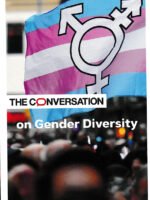Urban planners in developed countries are increasingly recognizing the need for closer integration of land use and transport. However, this updated second edition of How Great Cities Happen explains how crises like climate change and the lack of affordable housing demonstrate the urgent need for a broader approach in order to create and sustain great cities.
Offering innovative solutions to these contemporary challenges, this second edition of How Great Cities Happen examines new and emerging directions in strategic land use transport planning and analyses how cities function as a home for future generations and other species. Taking an integrated approach, and building on the first edition, chapters explore a broad range of issues concerning strategic urban planning. These include planning for productivity growth; social inclusion and wellbeing, with a particular focus on planning cities for children and youth; housing affordability; environmental sustainability; and integrated governance and funding arrangements. New issues covered in this edition include pressing concerns like climate change and biodiversity protection. The authors adopt a meticulous yet non-technical and accessible approach, grounded in a blend of academic and real-world experience of cities.
This transdisciplinary second edition will prove vital to students and scholars of urban planning, transport economics, and social and environmental policy, alongside professional planners and urban policymakers.









Be the first to review “How Great Cities Happen : Integrating People, Land Use and Transport, Second Edition”